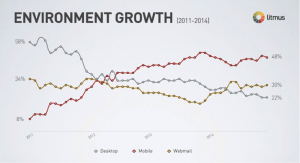What happens when other departments piggyback on the marketing tech stack and marketing decides to make a change?
Believe it or not, but sometimes marketing technology management requires a practitioner to serve another department. There are probably plenty of reasons why this may occur.
One main reason is when other teams piggyback off one of marketing’s services. This makes sense since it is inefficient (and likely expensive) for departments to use their own services when other departments currently have suitable options. Having more than one department use the same service certainly has its advantages.
Practitioners ultimately serve the entire organization
However, what happens if a department uses a service that marketing owns but plans to churn? This certainly is an important thing to consider when another department is using a marketing tech service. For instance, it may have a use case that doesn’t justify investing in a service for itself but can justify if it uses a service already in use by another department.
At such a time, a marketing technology manager will need to take the lead to ensure that the other department can transition off of the service if marketing doesn’t renew. Depending upon the situation, the martech manager may need to take the lead or simply serve as the motivator to the stakeholder from the other department. The crucial thing is to make sure that the other department understands that marketing strives to operate as a team player that aims to help the entire organization.
Maintain positive relationships
One important tactic to consider in such a situation is to find out if another department has a comparable service that can sufficiently replace the outgoing service. This is why it is important for martech practitioners to establish and maintain broad networks (beyond those essential to their duties and responsibilities) within their organization. That way it is easier to ask questions regarding what’s happening in other parts of the org chart, which can help provide leads for potential new solutions for non-marketing stakeholders.
Further, this is also a good time to point out that this is why it is important for martech practitioners to have positive relationships with finance, legal, procurement, and IT. These departments tend to deal with all departments throughout an organization on a regular basis. Thus, they should have a good idea of products and services in use throughout the organization to facilitate identifying suitable service replacement candidates.
What is and isn’t marketing tech
Such situations help validate the importance of considering the definition of what actually counts as marketing tech. I’ve argued that martech stacks should have components that aren’t martech. Martech practitioners limit themselves to pure martech at their peril. Beyond the fact that marketers regularly use and depend upon technology regardless of its classification, having a broader view helps the practitioner facilitate piggybacking departments migrate to other solutions — regardless if they’re project management tools, collaboration suites, or CRMs.
I haven’t experienced this yet, but it is entirely possible that marketing may churn on a product while there isn’t an existing suitable option within the organization for the other department using the product in question. At such a point, a martech practitioner can help assess if investing in a solution is worth it for the other department. If the answer is no, easy. If the answer is less clear, then it’s time to exercise some creativity. Are there other tools or services that are cheaper — albeit less robust — that the other department could pursue? Are there other tactics that could benefit and yield results with the funds and attention devoted to the former use?
Regardless, the practitioner needs to openly communicate this task with their chain of command. As nice as it is to help other departments, a practitioner’s superiors may have more important priorities at the moment.
Conclusion
This all further strengthens the proposition that martech is an art, not a science. There are rarely clear cut answers. Further, the specialty is far more than technical; an organizational behavior perspective is also prominent in a practitioner’s work.
Finally, the influence of the marketing tech stack extends beyond marketing within an organization. Understanding that fact is crucial.
The post Finding tech solutions for departments outside marketing appeared first on MarTech.
MarTech(81)





